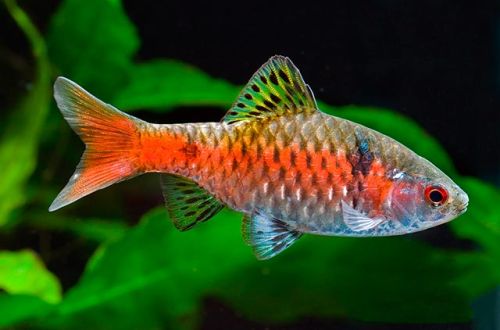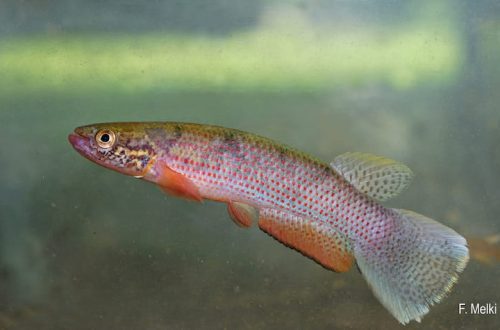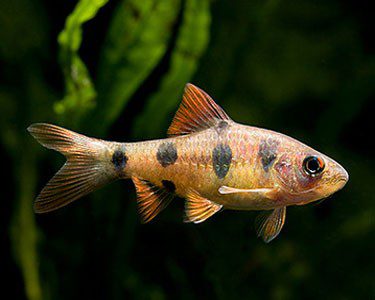
Rainbow river
River Melanothenia or River Rainbow, scientific name Melanotaenia fluviatilis, belongs to the Melanotaeniidae family. It is unpretentious, easy to keep and breed, compatible with many other fish species, and also has a beautiful body color. All this makes it a good choice for the beginner aquarist.

Contents
Habitat
Occurs from the east coast of Australia from the territory of the states of Queensland and New South Wales. Fish inhabit numerous rivers, ponds, lakes and swamps. They prefer regions with a slow current and dense aquatic vegetation. The natural habitat is subject to seasonal changes related to rainfall and temperature fluctuations.
Brief information:
- The volume of the aquarium – from 100 liters.
- Temperature – 20-25°C
- Value pH — 6.5–8.0
- Water hardness – medium hard (8-20 dGH)
- Substrate type – any
- Lighting – subdued
- Brackish water – no
- Water movement is weak
- The size of the fish is up to 10 cm.
- Food – any food
- Temperament – peaceful active
- Keeping a flock of at least 6-8 individuals
Description
Adults reach a length of about 10 cm. Depending on the specific region of origin, the number of colors in color may vary. On the body there are overflows of blue, yellow and greenish hues. A characteristic feature is the black edging of the fins and the reddish tail. Sexual dimorphism is weakly expressed, males are somewhat larger than females and have a more saturated color.
Food
Fish are unpretentious in terms of diet and nutritional composition. Accepts most types of popular foods (dry, frozen, live). It is advisable to combine different products. For example, flakes and granules should be served with bloodworms or brine shrimp. This diet will allow the fish to show their best colors.
Maintenance and care, decoration of the aquarium
The size of the aquarium for a small group of fish should start from 100 liters. The design should combine areas with dense vegetation and open spaces for swimming. The presence of shelters in the form of snags are welcome. The composition of the soil is any, selected based on the requirements of plants and the preferences of the aquarist.
Maintaining high water quality largely determines the success of keeping the Rainbow River. It is recommended to replace part (15–20% of the volume) of water with fresh water weekly and install a productive filtration system.
The fish prefers a subdued level of lighting and does not tolerate excessive internal flow. All this must be taken into account when choosing and configuring equipment.
Behavior and Compatibility
Active peaceful fish, compatible with other non-aggressive species of similar size. Excessive mobility of the Southern Rainbow can adversely affect slower neighbors, so it is advisable to exclude them. Keeping in a flock of at least 6-8 individuals of both sexes.
Breeding / breeding
Raduzhnitsy breeding is possible both in general and in a separate spawning aquarium. Favorable conditions for the beginning of the mating season are achieved at a temperature of 22–24°C, in slightly alkaline (up to pH 7.5) water of medium hardness. The design should contain thickets of small-leaved plants or their artificial analogues, acting as a spawning substrate, among which the females will lay their eggs.
Spawning lasts about 2 weeks, during this time the female lays several dozen eggs daily, and the male fertilizes them. Parental instincts are not developed, therefore, after the end of spawning, the fish do not show any interest in future offspring. If breeding was carried out in a common aquarium, then it is advisable to move the eggs to a separate tank with identical conditions. Otherwise, there is a great risk of them being eaten by other fish. In the absence of a spawning aquarium, dense clusters of floating plants can be acquired. They will serve as a safe haven for fry, which at first stay close to the surface.
The incubation period lasts about 6–10 days, depending on the temperature. In the first days of life, fry are able to eat only microscopic food, for example, ciliates. After a week, Artemia nauplius or specialized powdered food for juvenile aquarium fish can be fed. It is worth noting that it is rather problematic to feed the Rainbow fry in a common aquarium than in a separate spawning one.
Fish diseases
Health problems arise only in case of injuries or when kept in unsuitable conditions, which depresses the immune system and, as a result, provokes the occurrence of any disease. In the event of the appearance of the first symptoms, first of all, it is necessary to check the water for the excess of certain indicators or the presence of dangerous concentrations of toxic substances (nitrites, nitrates, ammonium, etc.). If deviations are found, bring all values back to normal and only then proceed with treatment. Read more about symptoms and treatments in the Aquarium Fish Diseases section.





